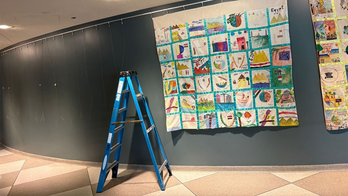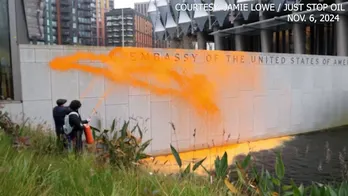Israeli forces push into southern Gaza, as humanitarian crisis worsens
TEL AVIV, Israel — The plight of Palestinian refugees, hemmed in and cut off by Israeli combat operations in Gaza, is becoming more acute as infrastructure is destroyed and civilian deaths rise in the wake of a cease-fire that ended last week, aid officials said Monday.
"People have lost everything and they need everything," UNRWA, the United Nations relief agency that oversees the Palestinian territories, said in a post on X, formerly called Twitter. "Gaza's population will soon begin dying from diseases as well as Israeli bombardment." More than 15,000 Palestinians have been killed since the start of the conflict, according to the Hamas-run Gaza Ministry of Health. That figure includes more than 6,000 children and 4,000 women.
The Gaza health ministry also says more than 300 Palestinians have been killed and hundreds more wounded since the fighting resumed four days ago.
The heightened concerns come as video posted to social media appears to show Israeli tanks and soldiers pushing farther south in pursuit of Hamas. On Oct. 7, the Palestinian Islamist militant group launched a surprise attack on southern Israel that killed 1,200 people, Israel says. Israel responded with massive airstrikes and a ground invasion of Gaza.
Over the weekend, Israel's military robocalled Palestinians in and around Gaza's second-largest city of Khan Younis, directing them to move to "safer zones" to avoid intensified combat operations. It was unclear how many Palestinians in Gaza received the calls on their cell phones or were able to make sense of the information.
Earlier this week, Israel's military directed residents in Gaza to refer to an online map to find areas free of fighting. However, many found the map confusing or had trouble accessing it because of connectivity issues. The map also directed people into increasingly overcrowded areas, potentially exacerbating the humanitarian crisis.
Ashraf Al Nahal, 43, took refuge in Khan Younis two weeks ago but says it's no longer safe there. "They are bombing the area," he told NPR.
He has since left, heading south near the border with Egypt. "They are bombing houses," he said. "We took the women and children and fled to Rafah."
However, Israel was also carrying out airstrikes in some areas of Rafah and the humanitarian situation was far from good, the U.N. Office for the Coordination of Humanitarian Affairs (OCHA) said. In its latest update, OCHA said the Rafah governorate "was the one [area] in Gaza where limited aid distributions, primarily of flour and water, took place" on Sunday.
"In the adjacent Khan Younis governorate, aid distribution largely stopped due to the intensity of hostilities," it said.
UNRWA said that 1.1 million internally displaced people — half of Gaza's total population — were registered in 156 U.N. facilities across Gaza. "Another 191,000 IDPs are estimated to be staying in 124 public schools and hospitals, as well as in other venues such as wedding halls, offices, and community centers."
The agency warned that they have witnessed "significant increases in some communicable diseases and conditions such as diarrhea, acute respiratory infections, skin infections and hygiene-related conditions like lice. There are also initial reports of disease outbreaks, including hepatitis A."
In the first weeks of the war, Israeli forces concentrated combat operations on the north of the Gaza Strip, warning people living there to flee south. However, in the days since the cease-fire collapsed on Friday, the focus of combat operations has increasingly shifted south. The effect has been to force civilians into an ever-smaller area of Gaza.
On Sunday, Israel's military said it had destroyed more than 60% of the 800 Hamas tunnel shafts that it has identified since the start of the war.
"The tunnel shafts were located in civilian areas, many of which were near or inside civilian buildings and structures, such as schools, kindergartens, mosques and playgrounds," the military said. "IDF soldiers located large quantities of weapons inside some of the shafts. These findings are further proof of how Hamas deliberately uses the civilian population and infrastructure as a cover for its terrorist activity inside Gaza."
Disclaimer: The copyright of this article belongs to the original author. Reposting this article is solely for the purpose of information dissemination and does not constitute any investment advice. If there is any infringement, please contact us immediately. We will make corrections or deletions as necessary. Thank you.







